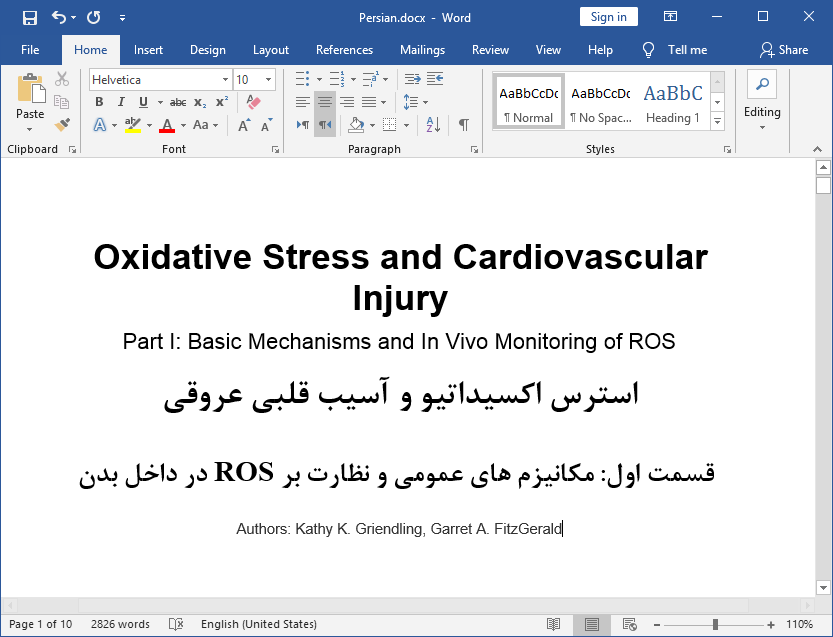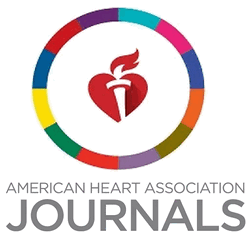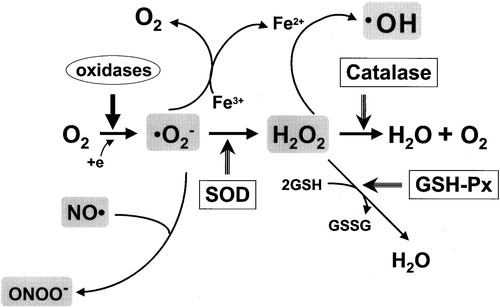استرس اکسیداتیو و آسیب کاردیوواسکولار : مکانیزم های عمومی و نظارت بر ROS در داخل بدن


شاپا پرینت: 0009-7322 وبسایت مرجع 50 رفرنس دارد
12,800 تومانشناسه فایل: 7180
- حجم فایل ورد: 269.6KB حجم پیدیاف: 267.2KB
- فرمت: فایل Word قابل ویرایش و پرینت (DOCx)
- تعداد صفحات فارسی: 10 انگلیسی: 6
- دانشگاه:
- the Division of Cardiology (K.K.G.), Emory University, Atlanta, Ga.
- the Center for Experimental Therapeutics (G.A.F.), University of Pennsylvania, Philadelphia, Pa.
- ژورنال: Circulation (1)
چکیده
استرس اکسیداتیو با رخدادهای مختلف پاتوفیزیولوژیک، از جمله سرطان، بیماری های کلیوی و عصبی نوترکیب مرتبط است. اخیرا، مشخص شده است که گونه های اکسیژن واکنشی (ROS) نیز در توسعه واسکولوپاتی ها نقش داشته باشند از جمله آنهایی که تصلب شرایین، فشار خون بالا و انسداد مجدد مجرا را پس از آنژیوپلاستی تعیین می کنند.فرضیه های “پاسخ به آسیب” توسط راسل راس در اواخر دهه 1970 مطرح گردید که پیشنهاد نمود آترواسکلروز، حداقل در اثر آسیب اولیه به سلول اندوتلیال، منجر به مختل شدن کارکرد اندوتلیال و متعاقباً نفوذ ماکروفاژها و اختلال در کارکرد عضلات صاف می گردد. پس از آن بسیاری از محققان بر اکسیداسیون LDL و تعامل آن با اندوتلیوم به عنوان آسیب اولیه ای که منجر به شکل گیری رگه های چربی و در نهایت آتروژنز می شود، متمرکز شده اند. هم اکنون مشخص شده که نه فقط ROS متنوع در دیواره عروق تولید می شود بلکه به صورت جداگانه و به صورت ترکیبی به بسیاری از اختلالات مرتبط با بیماری عروقی یاری می کند.
گونه های اکسیژن واکنشی
گونه های اکسیژن واکنشی (ROS) بسیاری وجود دارند که نقش های محوری در فیزیولوژی عروقی (شکل 1) و پاتوفیزیولوژی ایفا می نمایند که مهمترین آن ها عبارتند از: اکسید نیتریک (NO)، سوپراکسید (O2·−)، پراکسید هیدروژن (H2O2) و پراکسی نیتریت (ONOO·−). اکسید نیتریک (NO) معمولاً به وسیله سنتاز اکسید نیتریک اندوتلیال (eNOS) در عروق تولید می گردد اما در حالات التهابی، NOS القاپذیر را می توان در ماکروفاژها و سلول های عضلات صاف بیان نمود و به تولید NO کمک کرد.
اکسید نیتریک (NO) یک واسطه حیاتی در رگ گشایی وابسته به اندوتلیوم می باشد و همچنین ممکن است نقشی در تجمع پلاکتی و حفظ تعادل بین رشد سلول عضله صاف و تمایز نقش داشته باشد. سوپراکسید در اثر احیاء یک الکترون اکسیژن به وسیله انواع مختلف اکسیدازها به وجود می آید (شکل 2).
وقتی که O2·− همراه با NO تولید میگردد، آن ها به سرعت با شکل مولکول به شدت واکنش پذیر ONOO·− واکنش نشان می دهد. هم چنین ONOO·− نیز یک واسطه مهم برای پراکسیداسیون لیپید و نیتراسیون پروتئین از جمله اکسیداسیون LDL محسوب می گردد که دارای اثرات پرو آتروژنیک چشمگیری می باشد. در صورت عدم وجود NO بلافاصله قابل دسترس، O2·− آنزیم سوپراکسید دیسموتاز به سرعت به ROS و H2O2 باثبات تر و سپس توسط کاتالاز و یا گلوتاتیون پراکسیداز به H2O تبدیل می گردد.
اثرات O2·− و H2O2 بر کارکرد عروق وابستگی حیاتی به مقدار تولید آن دارد. هنگامی که این مواد در مقادیر کم به صورت درون سلولی تشکیل می شوند، آن ها می توانند به عنوان پیام رسان های ثانویه درون سلولی عمل نمایند و کارکرد مسیرهای بیوشیمیایی واسطه چنین پاسخ هایی را به عنوان رشد سلول های عروقی عضله صاف (VSMCs) و فیبروبلاست ها تعدیل نمایند. مقادیر بالاتر ROS می تواند موجب آسیب به DNA، سمیت قابل توجه و یا حتی آپوپتوز گردد که این موضوع در سلول های اندوتلیال و سلول های عضله صاف اثبات شده است.
ABSTRACT Oxidative Stress and Cardiovascular Injury - Part I: Basic Mechanisms and In Vivo Monitoring of ROS
Oxidative stress has been associated with diverse pathophysiological events, including cancer, renal disease, and neurodegeneration. More recently, it has become apparent that reactive oxygen species (ROS) also play a role in the development of vasculopathies, including those that define atherosclerosis, hypertension, and restenosis after angioplasty. The “response to injury” hypothesis developed by Russell Ross in the late 1970s suggested that atherosclerosis, at least, resulted from an initial injury to endothelial cells, leading to impaired endothelial function and subsequent macrophage infiltration and smooth muscle dysfunction. Many investigators then focused on oxidation of LDL and its interaction with the endothelium as the initial injury leading to the formation of fatty streaks and ultimately atherogenesis. It is now clear not only that diverse ROS are produced in the vessel wall, but that they individually and in combination contribute to many of the abnormalities associated with vascular disease.
Reactive Oxygen Species
There are many ROS that play central roles in vascular physiology (Figure 1) and pathophysiology, the most important of which are nitric oxide (NO·), superoxide (O2·−), hydrogen peroxide (H2O2) and peroxynitrite (ONOO·−). NO· is normally produced by endothelial nitric oxide synthase (eNOS) in the vasculature, but in inflammatory states, inducible NOS can be expressed in macrophages and smooth muscle cells and contributes to NO·production. NO·is a crucial mediator of endothelium-dependent vasodilation and may also play a role in platelet aggregation and in maintaining the balance between smooth muscle cell growth and differentiation. Superoxide results from one electron reduction of oxygen by a variety of oxidases (Figure 2). When O2·− is produced in concert with NO·, they rapidly react to form the highly reactive molecule ONOO·−. ONOO·− is an important mediator of lipid peroxidation and protein nitration, including oxidation of LDL, which has dramatic proatherogenic effects. In the absence of immediately accessible NO·, O2·− is rapidly dismutated to the more stable ROS, H2O2, by superoxide dismutase, which is then converted to H2O by either catalase or glutathione peroxidase. The effects of O2·− and H2O2on vascular function depend critically on the amounts produced. When formed in low amounts intracellularly, they can act as intracellular second messengers, modulating the function of biochemical pathways mediating such responses as growth of vascular smooth muscle cells (VSMCs) and fibroblasts. Higher amounts of ROS can cause DNA damage, significant toxicity, or even apoptosis, as demonstrated in endothelial cells1 and smooth muscle cells.

Cellular and Enzymatic Sources of ROS in the Vessel Wall
Each of these ROS derives from specific enzymatic or chemical reactions. NO· is produced in endothelial cells by activation of eNOS during the normal functioning of the vessel wall. Vasodilator hormones raise intracellular Ca2+, leading to an increase in eNOS activity and NO· release. Physical forces, such as fluid shear stress, activate eNOS via protein kinase A- or Akt-dependent phosphorylation. Pathophysiological expression of inducible NOS in both macrophages and VSMCs elevated cytokine levels, resulting in localized inflammation. This, in turn, results in production of NO· in the absence of further stimuli. Moreover, under some circumstances, eNOS becomes uncoupled and O2·− is made rather than NO·.3 The NOS enzymes are thus potentially important sources of both NO· and O2·−, depending on the surrounding environment.
Virtually all types of vascular cells produce O2·− and H2O2.4 In addition to mitochondrial sources of ROS, O2·− and/or H2O2 can be made by many enzymes (Figure 2). Two of the most important sources in the normal vessel are thought to be cytochrome P450 and the membrane-associated NAD(P)H oxidase(s).5,6 A cytochrome P450 isozyme homologous to CYP 2C9 has been identified in coronary arteries and has been shown to produce O2·− in response to bradykinin.7 NAD(P)H oxidases that are similar in structure to the neutrophil respiratory burst NADPH oxidase, but produce less O2·− for a longer time, have been identified in vascular cells. The endothelial, VSMC, and fibroblast enzymes are not identical but have unique subunit structures and mechanisms of regulation.4 One important aspect of ROS production by at least the VSMC NAD(P)H oxidase is that it occurs largely intracellularly, making it ideally suited to modify signaling pathways and gene expression.

- مقاله درمورد استرس اکسیداتیو و آسیب کاردیوواسکولار : مکانیزم های عمومی و نظارت بر ROS در داخل بدن
- پروژه دانشجویی استرس اکسیداتیو و آسیب کاردیوواسکولار : مکانیزم های عمومی و نظارت بر ROS در داخل بدن
- استرس اکسیداتیو و آسیب کاردیوواسکولار
- پایان نامه در مورد استرس اکسیداتیو و آسیب کاردیوواسکولار : مکانیزم های عمومی و نظارت بر ROS در داخل بدن
- تحقیق درباره استرس اکسیداتیو و آسیب کاردیوواسکولار : مکانیزم های عمومی و نظارت بر ROS در داخل بدن
- مقاله دانشجویی استرس اکسیداتیو و آسیب کاردیوواسکولار : مکانیزم های عمومی و نظارت بر ROS در داخل بدن
- استرس اکسیداتیو و آسیب کاردیوواسکولار : مکانیزم های عمومی و نظارت بر ROS در داخل بدن در قالب پاياننامه
- پروپوزال در مورد استرس اکسیداتیو و آسیب کاردیوواسکولار : مکانیزم های عمومی و نظارت بر ROS در داخل بدن
- گزارش سمینار در مورد استرس اکسیداتیو و آسیب کاردیوواسکولار : مکانیزم های عمومی و نظارت بر ROS در داخل بدن
- گزارش کارورزی درباره استرس اکسیداتیو و آسیب کاردیوواسکولار : مکانیزم های عمومی و نظارت بر ROS در داخل بدن
